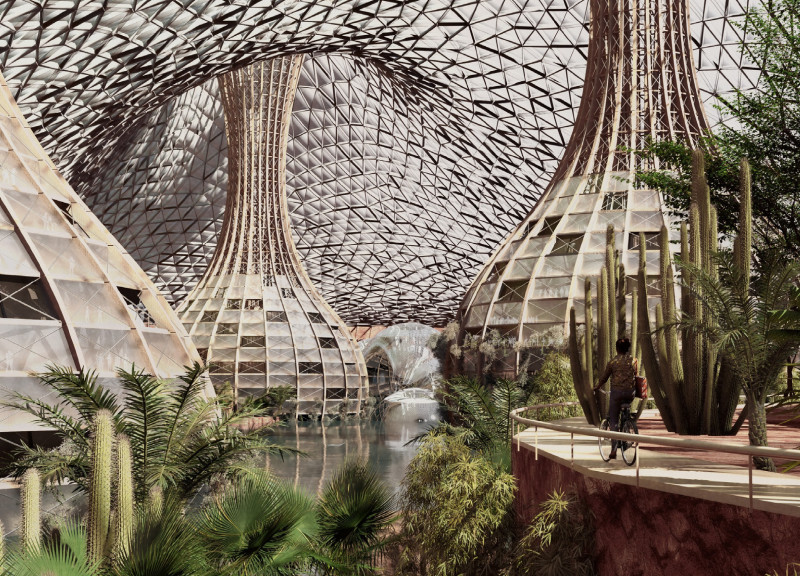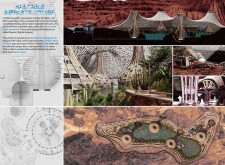5 key facts about this project
The project is located in a remote valley on an abandoned mining site, a choice that presents both challenges and opportunities in terms of environmental integration and resource management. The intent is to address future urban living conditions, particularly in response to projections indicating a global population of 10 billion by 2050, with a significant portion residing in urban areas. The design concept, referred to as “Habitable Infrastructure,” aims to create a self-sustaining ecosystem that balances human habitation with natural landscapes, promoting a community-oriented lifestyle that embraces both nature and advanced technology.
### Spatial Strategy and Community Engagement
The development's layout prioritizes communal spaces designed for social interaction and connectivity among residents. These spaces include multipurpose areas and exhibition venues that foster creativity and cultural exchanges, reflecting the importance of community living. Residential units are designed as scalable pods that incorporate gardens and green roofs to support local biodiversity. Additionally, dedicated camping sites featuring tent-like canopies provide flexible gathering spaces that enhance air circulation and natural lighting, contributing to the overall livability of the environment.
### Materiality and Sustainable Practices
A diverse range of materials has been integrated into the design, emphasizing sustainability and a connection to the natural landscape. Wood serves as a primary structural element, while extensive glass facades maximize natural light and views. Steel provides structural integrity for canopy-like formations, and geopolymer concrete is utilized as a sustainable alternative to traditional concrete, minimizing environmental impact. Pneumatic membranes allow for adaptable space configurations, responding to changing environmental conditions. Furthermore, solar panels are incorporated to harness renewable energy, reinforcing the project's commitment to self-sufficiency and resource efficiency. Water management systems are strategically placed to ensure functional and aesthetic contributions to the landscape, meeting the community's needs while promoting ecological stewardship.



















































